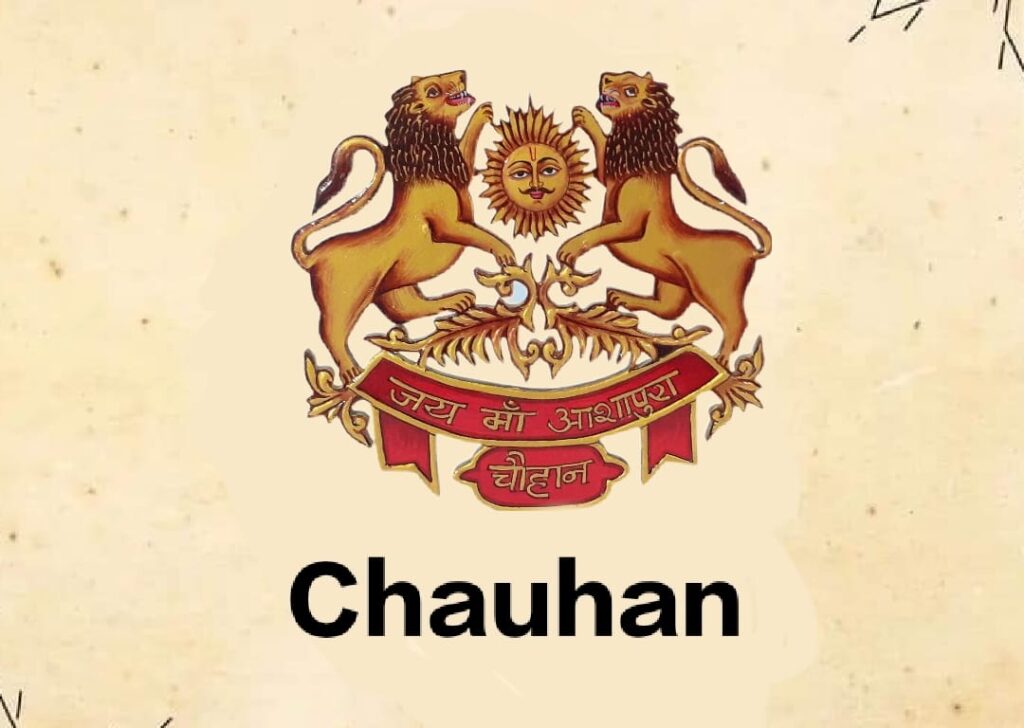The Glorious Legacy of the Chauhan Dynasty: A Saga of Valor

Introduction
The Chauhan Dynasty stands as one of the most formidable Rajput clans in Indian history, known for its unwavering valor, strategic governance, and cultural contributions. Emerging as powerful rulers during the medieval period, the Chauhans played a crucial role in shaping the political landscape of North India. Their rule extended across Rajasthan, Delhi, and parts of Uttar Pradesh, leaving an indelible mark on India’s heritage. This article explores the origins, achievements, and lasting impact of the Chauhan Dynasty.
Origins and Rise to Power
The Chauhan Dynasty traces its origins to the Agnikula Rajputs, a warrior lineage believed to have emerged from a sacred fire pit at Mount Abu. The earliest Chauhan rulers established their dominion in Ajmer, Rajasthan, which became the heart of their kingdom. Over time, the Chauhans expanded their territory through strategic alliances and military prowess.
One of the earliest significant rulers was Vasudeva Chauhan, who laid the foundation of the dynasty in the 7th century. However, it was Raja Ajayraj Chauhan (Ajairaj Dev) who fortified Ajmer and expanded Chauhan influence significantly. He is credited with constructing the renowned Taragarh Fort, which became a stronghold of Chauhan rule.
Prithviraj Chauhan: The Legendary Warrior
Among the many illustrious rulers of the Chauhan Dynasty, Prithviraj Chauhan (1149–1192 CE) stands out as the most celebrated. Known for his extraordinary bravery, he ruled over Delhi and Ajmer, defending his kingdom against foreign invasions. His rule marked the height of Chauhan power in North India.
Battles Against Muhammad Ghori
Prithviraj Chauhan’s reign is best remembered for his conflict with Muhammad Ghori, the ruler of the Ghurid Empire. The two decisive battles fought between them were:
- First Battle of Tarain (1191 CE): Prithviraj Chauhan emerged victorious, defeating Muhammad Ghori’s army and forcing him to retreat.
- Second Battle of Tarain (1192 CE): In this battle, Prithviraj Chauhan suffered a defeat due to internal betrayals, marking the beginning of Turkish dominance in North India.
Despite his eventual loss, Prithviraj Chauhan remains a symbol of Rajput bravery and resistance against foreign invasions.
Political and Administrative Contributions
The Chauhan rulers were not just warriors but also efficient administrators. Their governance model emphasized justice, infrastructure development, and cultural patronage.
- Strong Fortifications: They built massive forts like Taragarh Fort (Ajmer) and Ranthambore Fort, strengthening their defenses against invaders.
- Efficient Judicial System: The Chauhans promoted a well-structured legal system, ensuring fair trials and justice.
- Economic Prosperity: Agriculture and trade flourished under Chauhan rule, leading to the economic stability of their kingdom.
Architectural and Cultural Legacy
The Chauhan Dynasty significantly contributed to India’s architectural and cultural heritage. Their patronage of art and architecture led to the construction of several magnificent structures, including:
- Adhai Din Ka Jhopra (Ajmer): A stunning example of Indo-Islamic architecture originally built as a Sanskrit college and later converted into a mosque by Qutub-ud-din Aibak.
- Kirti Stambh (Chittorgarh): A victory tower symbolizing Rajput valor.
- Numerous temples and stepwells that reflected their commitment to art and spirituality.
Moreover, the Chauhan rulers encouraged literature and poetry. Prithviraj Chauhan himself was well-versed in Sanskrit and Hindi poetry. His court poet, Chand Bardai, composed the famous epic Prithviraj Raso, detailing the heroic exploits of the king.
Decline of the Chauhan Dynasty
Following the defeat of Prithviraj Chauhan in 1192, the Chauhan Dynasty weakened significantly. However, the Chauhans continued to rule in fragmented regions, such as Ranthambore and Bundi, resisting Mughal dominance for centuries.
During the medieval period, different branches of the Chauhan lineage emerged in Rajasthan and Madhya Pradesh, establishing smaller kingdoms that persisted even during the British Raj. Some notable Chauhan strongholds included:
- The Hada Chauhans of Bundi and Kota
- The Deoras of Sirohi
- The Chauhans of Mainpuri in Uttar Pradesh
Chauhan Dynasty in the Modern Era
Even though the Chauhans lost their imperial power, their descendants continued to influence Indian politics and governance. Many Chauhans served as administrators, military officers, and politicians in modern India.
Moreover, the legacy of Prithviraj Chauhan remains deeply embedded in Indian culture, with numerous books, folk tales, and movies celebrating his heroism. The Rajput warrior spirit continues to inspire people, making the Chauhan Dynasty an enduring symbol of resilience and pride.
Conclusion
The Chauhan Dynasty played a pivotal role in shaping India’s history. From their rise in Ajmer to their fearless battles against invaders, their contributions to administration, art, and culture remain unparalleled. Despite their decline, their legacy lives on through forts, literature, and folklore, reminding us of their indomitable spirit. The Chauhans exemplified the virtues of courage, loyalty, and governance, leaving an everlasting mark on India’s historical landscape.






